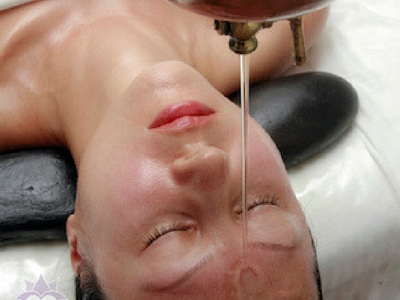Online Courses
Ayurvedic Health Counselor Online 7-Month Program
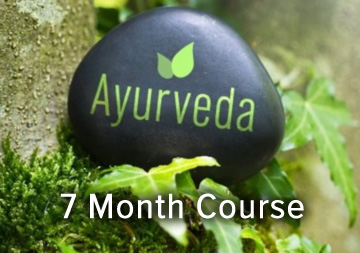
Sacred Stone Shirodhara Therapy Course | 10 CEs
Ayurvedic Bodywork Specialist (ABS) Course | 17 CEs
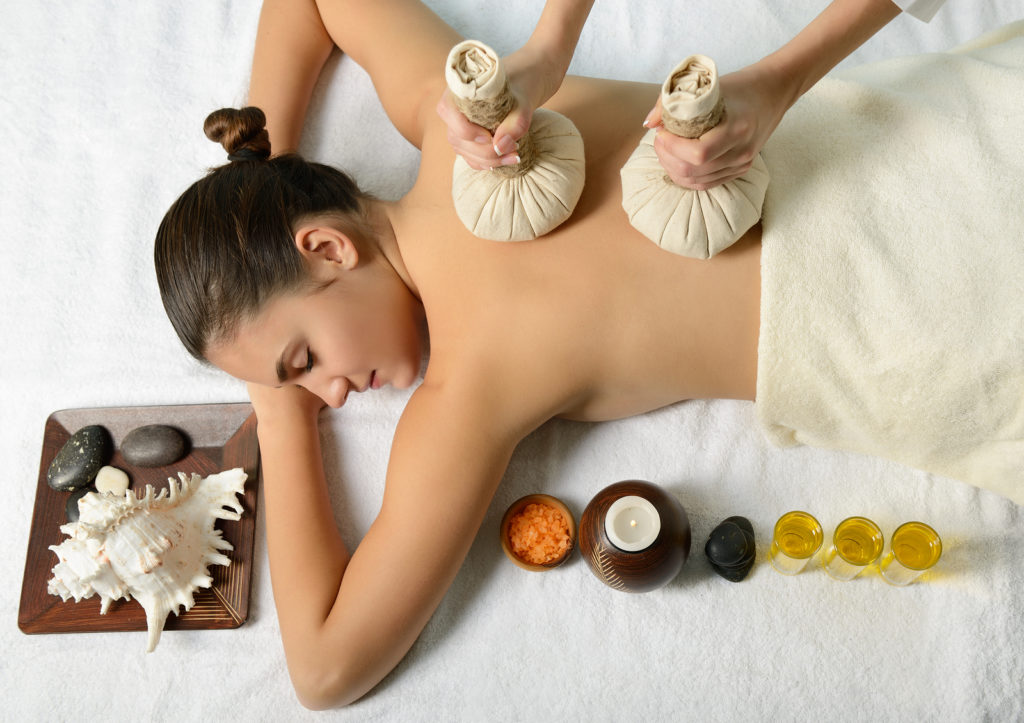
Light on Research | 1 CE
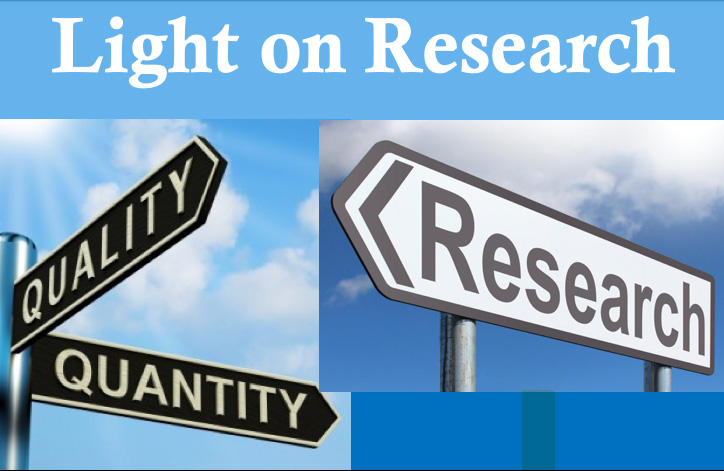
Sacred Hot Stone Massage Therapy Certification | 50 CEs
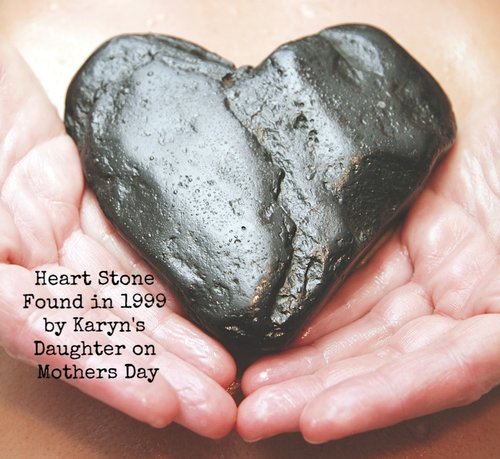
Sister Sciences: Yoga & Massage Self-Care 0 CEs
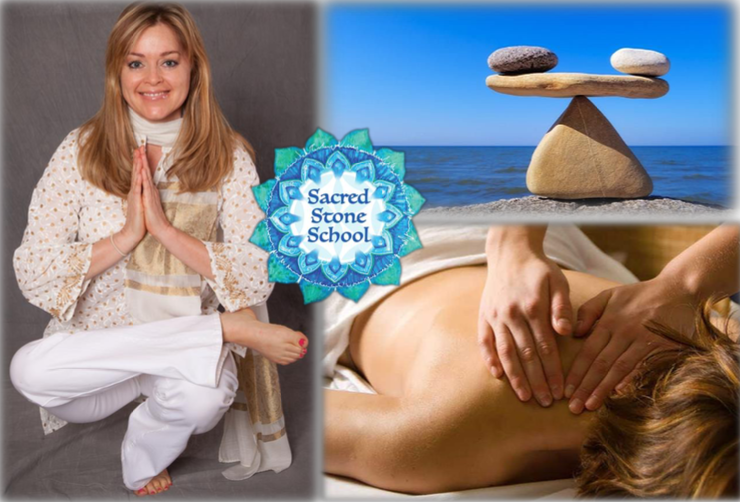
NCBTMB Ethical Touch Course | 3 CEs
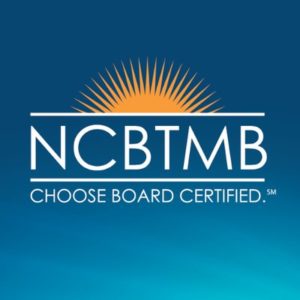
Hot Stone Marma Therapy For Face, Neck, Feet & Hands Certification 0 CEs
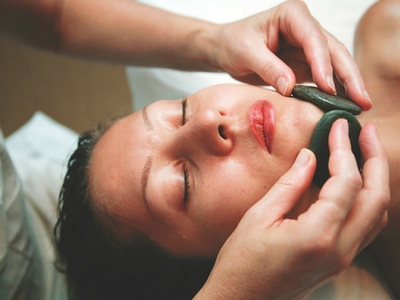
Marma Point Therapy (Intro) Course 0 CEs
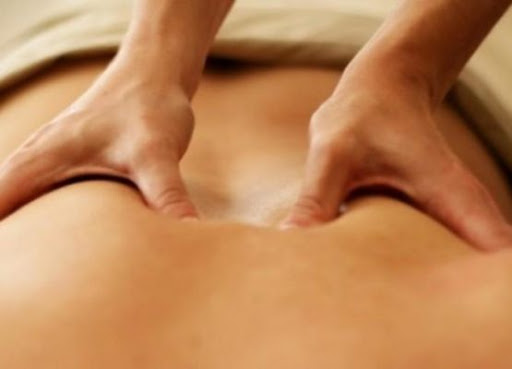
Ethics for Yoga and Massage Therapists | 3 CEs
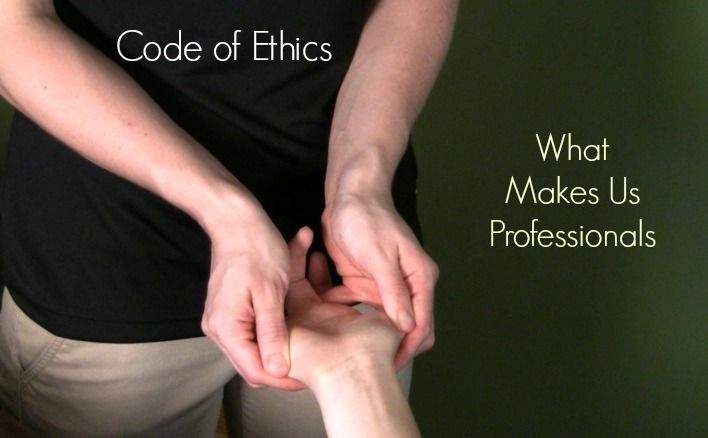
Thermo-hydrotherapy Restorative Applications (Swedhana/Garshana) Course | 2 CEs
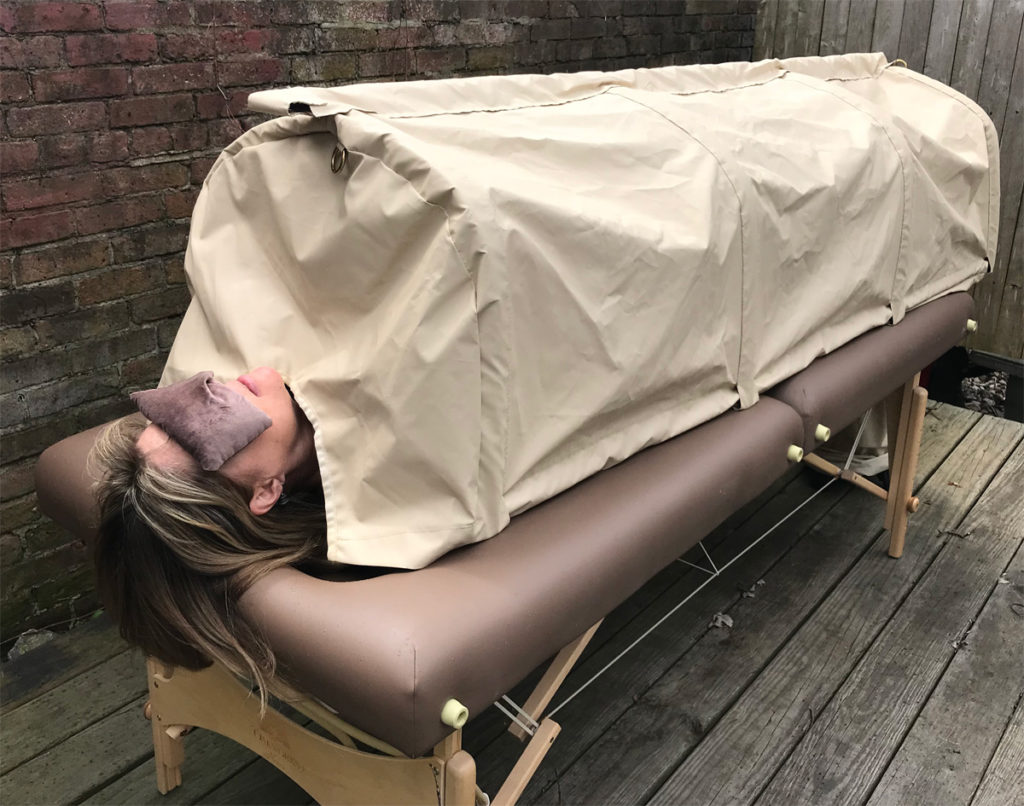
NCBTMB Roles And Boundaries (Standard V.) Ethics | 2 CEs
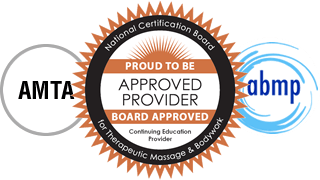
Ayurvedic Abhyanga Massage| 50 CEs
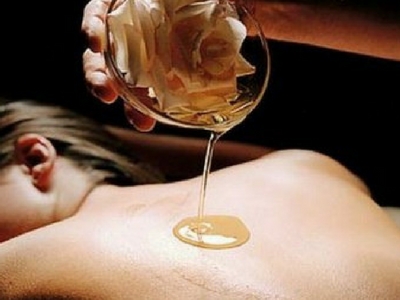
Compassionate NCBTMB Ethics Course | 3 CEs

Ayurveda for Massage Therapists 101 Online Course | 50 CEs
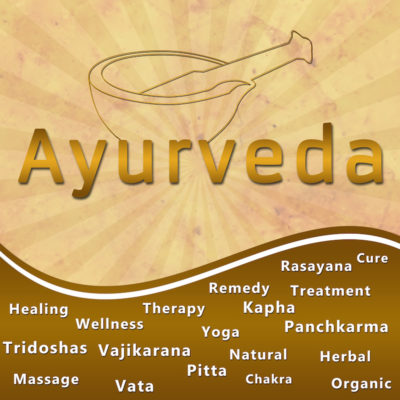
Human Anatomy & Physiology Course 0 CEs
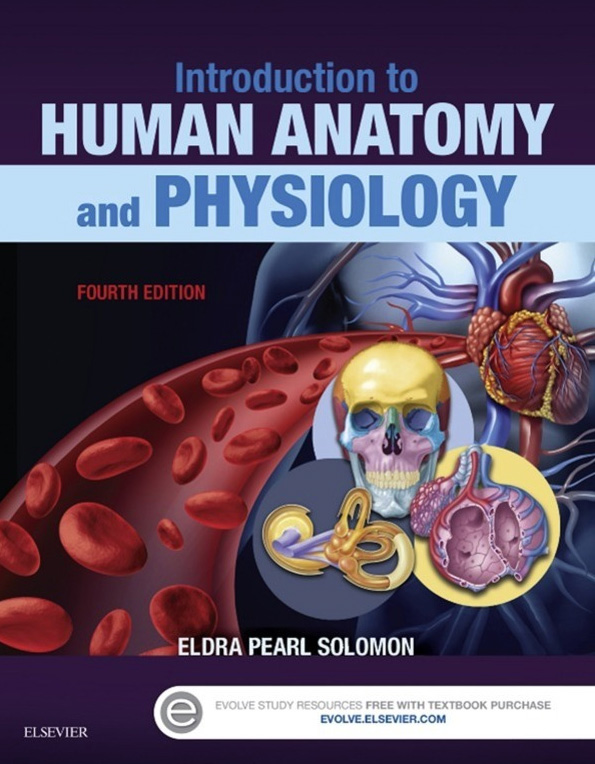
Ayurveda Made Simple: India’s ancient science of longevity and self-healing
When I was a student of Dr. Vasant Lad at The Ayurvedic Institute in Albuquerque, NM (1996-97), each class left me in awe as I learned more about the ancient, profoundly simple, biological and spiritual science of Ayurveda. In the past, Ayurveda has been misunderstood and seen as a religion or a cult, but now, with the yoga craze, people are starting to see that it is a beautiful medical science that encourages people to live in harmony with the earth, the elements and the seasons. It is a sister science to yoga and astrology. Ayurveda does not involve mandatory worship of mysterious deities. Instead it embraces all spirituality and recognizes the divine intelligence within all living things. It is the ancient healing science of India.
Read more…
History of Stone Healing
Within the bodywork industry, the integration of heated and chilled stones in massage therapy has become widely appreciated and accepted as an enduring, effective modality. This ancient form of healing has not resurfaced to replace the healing hand, but instead, to be used as an adjunct to enhance alternative and mainstream bodywork systems. Stones can be used as extensions of the hand or as tools, depending on the client and the desired effect. Be cognizant that the essence of stone therapy, and all therapies, is elevated by the transference of authentic compassion and trust between the therapist and the client. This compassion then becomes imprinted within the matrix of each stone. Without this foundation of compassion and trust, the stones, as with any other healing tool, are rendered useless.
Read more…
What is Sacred Stone Therapy?
Sacred Stone Therapy marries the art of stone bodywork with the amazing ancient science of Ayurveda. This treatment is designed to take 75 minutes. Of the 5 elements that exist in the universe and within ourselves, it has been our observation that the wind element (ether & air), otherwise known as Vata, is the element that seems to be most out of balance in the majority of people who live in this fast-paced, multi-tasking part of the world, where people have email, a TV, 2.5 kids, voicemail, stressful jobs, cars, and confused relationships.
Read more…
How Does Sacred Stone Therapy Integrate Ayurveda?
The purpose of Sacred Stone Therapy is to soothe the vata dosha. Vata is responsible for blowing all the other doshas out of their “homes”. Sacred Stone Therapy is one of the best preventative medicines and people of all constitutions will benefit from this profound bodywork experience.
Read more…
Seven Ayurvedic Constitutions
These constitutions are determined at conception and never change.
Read more…
Shirodhara Therapy
Shirodhara is a Sanskrit word. Shiro means head. Dhara means thread or “flowing like a thread”. Shirodhara means `the flowing of oil like a thread (dhara) on the head (shiro). This treatment allows warm oil to flow in a steady stream on the third eye (6th chakra) located on the forehead and over the top of the head (crown chakra). Shirodhara rejuvenates both the mind and the senses, which allows the body’s natural healing mechanisms to release stress from the nervous system and improve mental clarity and comprehension. Shirodhara is a profound mind-melting, sacred treatment using medicinal Ayurvedic oils, sometimes followed or preceded by massage.
Read more…
Ayurveda Made Simple
India’s ancient science of longevity and self-healing
When I was a student of Dr. Vasant Lad at The Ayurvedic Institute in Albuquerque, NM (1996-97), each class left me in awe as I learned more about the ancient, profoundly simple, biological and spiritual science of Ayurveda. In the past, Ayurveda has been misunderstood and seen as a religion or a cult, but now, with the yoga craze, people are starting to see that it is a beautiful medical science that encourages people to live in harmony with the earth, the elements and the seasons. It is a sister science to yoga and astrology. Ayurveda does not involve mandatory worship of mysterious deities. Instead it embraces all spirituality and recognizes the divine intelligence within all living things. It is the ancient healing science of India.
The UN’s World Health Organization recognizes Ayurveda as one of the top three medical systems in America. Polarity therapy, acupuncture, crystal healing, aromatherapy, magnet therapy, hot stone massage therapy, Reiki, flower essence therapy & iridology are a few healing modalities that can be traced to India. Ayurveda is the Mother of all healing as it addresses the root of disease, rather than just alleviating symptoms. It doesn’t assign a medical name to disease. Whenever you name something, you are indirectly assigning power to it. Instead, Ayurveda views disease as an imbalance of the five great elements within the body. Some of the modalities used to restore this fragile balance include nutritional and lifestyle changes, specific bodywork, herbs, yoga, meditation, mantra, mindfulness, breath-work, sound, color, crystal, aromatherapy and living intuitively. This ancient science was designed to empower people with the knowledge of self-discovery and self-healing.
Disease starts in the mind with the thought. By cultivating the garden of your mind and generating positive thoughts, you can prevent disease. A thought is absorbed and assimilated into the body, just like food, right down to the smallest structure of the human cell. An Ayurvedic Practitioner colleague and friend of mine named Ryan Kurczak, LMT once told me:” Many of the people I know who succeed in utilizing Ayurveda as an effective method of health maintenance implement moderate changes over a long period of time. They are not fanatics and don’t get bent out of shape if someone offers them a piece of chocolate cake when they are supposed to be on a “pure” Ayurvedic diet. When I asked my spiritual teacher about how strict I need to be with Ayurveda he said, “Meditate, and be happy. Then adjust your diet as you need to.” One of the most powerful disease causing factors according to Ayurveda is a diseased mind. When the mind is peaceful, the body will be as well.” Ryan developed the“Ayurveda for Bodyworkers Correspondence Course” at Sacred Stone approved by the NCBTMB.
We are the subatomic structure of God; we are microcosms of the macrocosmic universe. There are five great elements that exist on our planet: ether, air, fire, earth and water. Ayurveda classifies these 5 elements into 3 aspects. These aspects are referred to as doshas, a Sanskrit word meaning biological principle, which generally refers to an imbalance due to “excess” of one of the elements within the body.
Although there are five great elements, there are only 3 doshas or biological principles. All five elements must exist within our bodies and within the universe in order for us to function properly. As soon as the sperm meets the egg, a unique combination of the five great elements is determined and the physical constitution is born. This constitution is called Prakruti.
Stress, negative thoughts, feeling disconnected from the divine within ourselves or the ones we love, wrong food choices, and lack of exercise are just some of the things that throw us out of balance. When the doshas are out of balance, it usually means they are in excess and have reached the first of 6 stages in the disease process called “accumulation.” Restoring balance usually means reducing the dosha by making conscious choices regarding our lifestyle, food, mindfulness, exercise, breath, prayer, meditation and bodywork.
What are the three doshas? 1) Vata is a Sanskrit word meaning “what blows” and lives in the colon/large intestines. Vata becomes excessive on cold, windy days during the fall and winter. When vata within the body is in excess, people tend to experience anxiety, panic attacks, insomnia, paranoia and loneliness. 2) Pitta is a Sanskrit word meaning “what cooks” and lives in the small intestines. Pitta becomes excessive on hot summer days. When pitta within the body is excessive, people tend to experience self-condemnation, jealousy, anger, competitive thoughts, and aggression. 3) Kapha is a Sanskrit word meaning “what sticks,” and lives in the stomach. Kapha becomes excessive on cool, muddy days of spring and on cold, snowy days in the winter. When kapha within the body becomes excessive, people experience greed, lethargy, apathy and heaviness. The weather, the seasons, our genetic constitution and lifestyle choices we make and our thoughts have a direct affect on our health.
After careful observation of the majority of my clients and friends, I have concluded that the most common complaints are stress and anxiety, which consequently deranges vata within the body. Living in a world where we are eating lunch while we are driving our car or reading our email while listening to our voicemail at the same time will naturally disturb vata within the body and mind. Multi-tasking and feeling like there is not enough time in a day will continually challenge vata. When the vata dosha is out of balance within the body, it can blow the other
doshas (pitta & kapha) out of balance causing an overflow of the other doshas. Preventing all the doshas from becoming excessive is important, but remember that vata is the dosha that is critical to health and longevity. The ancient Ayurvedic texts say the earth is now in the vata stage of its evolution, so vata is high for everyone simply because we are so connected to our earth.
There are specific bodywork techniques and lifestyle choices that pacify and calm the vata dosha. Massage therapists are at risk for having excessive vata because of the nature of the job. Most massage therapists will tell you they are in constant physical motion on some level during a session. Massage therapists are movement-centered, energetic and on the go. Since vata is the dosha responsible for motion within the body and the universe, massage therapists need to take extra care not to accumulate too much vata.
Massage therapy can become a vata-provoking job, so choose a lifestyle that will soothe and balance your vata. Here are some easy vata soothing activities:
- Eat your meals at the same time everyday (or at least one meal).
- Plan your meals to avoid becoming anxious, cranky and hungry.
- Stay quiet during each massage session; be an active listener.
- Walk slowly, unless you are exercising. Walking more than 2 hours will irritate vata.
- Think positive thoughts and read daily affirmations.
- Avoid chatty people and long phone calls.
- Eat warm, unctuous foods, especially on cold, windy, dry days.
- Avoid scary movies.
- Avoid being in confused relationships.
- Stay warm.
- Go to bed at or before 10 p.m.
- Get a weekly massage with warm, organic, edible oil, ie, sesame, sunflower or castor oil.
- Give yourself a daily oil rub-down (abhyanga)
- Surround yourself with soft things, i.e., pillows.
- Avoid being late or rushed.
- Avoid over exercising.
- Surround yourself with friends who make you laugh.
- Adopt a personal daily restorative yoga routine and pranayama breathing.
- Avoid carbonated beverages.
- Avoid excessive mouth breathing while giving a massage. Instead, learn ujjayi breathing in and out of the nose.
Dr. Vasant Lad taught his staff of massage therapists to say (or chant) the sounds of Hari Aum to make the experience more powerful and auspicious. Aum is the sound that contains all possible sounds made by all possible creatures through all possible times and the sound made by Gaia (Mother Earth) herself as she dances her dance of creation, sustenance, and absorption. It is the sound astronauts have reported to hear when they are launched into space. Alexander Graham Bell was perplexed and intrigued by this sound. While he was inventing the telephone, he noticed that the sound of aum was always present when he tapped into the “airways” regardless of his geographical location.
Saying the name of God with great reverence is auspicious, no matter what name you’re saying. “Hari”, translated from Sanskrit, has many meanings: 1. Pure existence without thought, 2. The end of knowledge, 3. Choice-less, passive awareness. Hari is Shiva, king of oneness, Vishnu, the protector, and Krishna. Silently saying the sound of Hari aum or chanting it out loud before each healing session invokes a loving, gentle force where no duality exists. The sound Hari aum creates a sacred space in the room. The sounds of Ha activates the heart chakra.
The sound of Ri activates the throat chakra and the sound Aum actives the 6th and 7th chakra. The actual sound of aaahhhh is the sound of the Creator. You will find that in every culture and religion, the name for God has the sound of aaahhh somewhere in it. If you question where the sound aaaahhhh is in Jesus, keep in mind the Hebrew pronunciation was, “Yesh-u-ah.” Wayne Dyer, an internationally renowned author and speaker, advocates using the sound aaahhh during meditation to manifest and create the things you desire in your life.
Bodywork Techniques that will Sooth the Vata Dosha:
- Slow, confidant effleurage strokes using wide hands covering as much surface area as possible.
- Wringing and squeezing motions as if you are gently squeezing the air out of the body.
- Very defined draping techniques to create trust and eliminate any fears of possibly being exposed and embarrassed.
- Defining the beginning and ending of each massage session using the same signal or modality every time. For example, connecting with your client’s feet while silently setting a prayer of intention before the session starts and using Tibetan bells to signify the end and whispering, “Thank you, take your time getting off the table. Go gently.”
- Focusing each stroke to move out towards the feet, hands and root chakra, which are some of the terminal ends of the body. Ayurveda calls this “Terminal Clearance.”
- Activating the downward flow in the body called “apana vayu”, which is a Sanskrit word meaning “direction towards the earth”. Instead of using strokes towards the heart, use strokes towards the feet.
- Use copious amounts of warm, edible oil.
- Use soft lights, soft pillows and cushions, a soft voice, soft music and a soft heart because people with excessive vata are like delicate flowers.
- Keep the room warm and use a fluffy blanket instead of a thin sheet to cover your client.
- Gentle compression.
- Swedhana Steam Therapy.
- Thermotherapy such as Hot Stone Therapy. (Certified Sacred Stone Massage Therapists are trained to pacify the vata dosha with heated stones. Find a Sacred Stone Therapist in your area by visiting sacredstonehealing.com)
“One of the most important things I’ve learned from Ayurveda in regards to bodywork is that the oils, stones, herbs and techniques applied during a session are all secondary to the therapist’s state of consciousness. If the vitality of the therapist is not strong, clear and centered in a space of balance and wholeness, which can easily be actualized by following simple Ayurvedic principles, even the most well intended treatments may fail to give results.” Ryan Kurczac, LMT.
Compression therapy using 10 lb handmade heated sandbags will initiate the relaxation response. The sandbags sold at Sacred Stone Healing Center are handmade by an Ayurvedic Practitioner with care and are shipped empty. You can fill them with sterile sandbox sand from any hardware store or with volcanic black sand. Compression immobilizes the muscle, so there is a surrendering that must occur on the part of the client. When the body stops twitching and wiggling to find comfort, only then can we attain the inner stillness we all seek.
Sandbags create a perfect amount of pressure and can be heated on an oil heater. Laying sandbags on the top of the thighs will encourage the femurs to ground more deeply into the hips sockets. When the hip sockets are not in perfect alignment, it increases the likelihood of disturbing vata because spaces within all joints belong to the vata dosha, especially in the hips. It also helps redirect the energy downward by simply increasing body awareness in the legs.
The roots of hot stone massage therapy can be found in India. Stones are the ancient bones of the earth. There is an ethereal pulse within the earth and within each stone which will harmonize perfectly with the human pulse, if we allow it. Dr. Naina Marballi, BSAM, DAC, owner of Ayurveda’s Beauty Care in NYC, a sister school to Sacred Stone School and Center in Newport, RI, reports that part of her curriculum at Poddar College and Mombai University in India was a course called “Shila Abyhanga”. Shila is a Sanskrit word for stone and abhyanga is a Sanskrit word for oil massage. She told me that this course dates back more than 5,000 years as part of the standard protocol for most medical Ayurvedic physicians. If you are ever visiting NYC, be sure to book an appointment with Dr. Naina or Amita. They are profound teachers and healing facilitators. Ayurveda’s Beauty Care is located at 99 University Place 5th floor.
Another profoundly effective healing modality is the Swedhana Therapy, which integrates a steam tent handmade by Sacred Stone that fits perfectly on the massage table. It’s a powerful addition for those therapists who need to save their hands. Students may purchase this online continuing education (CE) massage course approved for massage credits by the NCBTMB, aka, CBTMB at the links below, as well as above.
The Shirodhara Therapy course is an ancient sacred treatment to the forehead and crown of the head. Shiro means head and dhara means flow. Warm, herbal oil is poured in a continuous stream over the client’s forehead and crown for 20-50 minutes. Shirodhara helps disperse negative electrical impulses that accumulate at the skull from stress. It opens the third eye, increases intuition and renews the sweetness of life. It also has powerful medical value for healing neurological disturbances and chemical imbalances within the brain.
There are many books on the subject of Ayurveda that include lists of food that pacify the doshas. Let these Ayurvedic food lists be your “training wheels”. These “training wheels” will assist in developing your intuition. Living intuitively is synonymous with living in harmony with nature, which is the very foundation of Ayurveda. Do not get caught up in food lists and lifestyle rules. Educate yourself with the knowledge of Ayurveda, apply the principles to your life, then learn to eat and live intuitively.
Become aware of how your body feels after you eat a certain food or after you do a certain exercise or if you go to bed by a certain time. Each person is a conglomerate of many attributes and a beautiful mixture of the five great elements. You are not just a vata person, a pitta person or a kapha person. We contain all the doshas within us. Yet, we are all genetically predisposed to one (maybe two) doshic attributes that will have a preponderance to go out of balance more easily than other doshic qualities. Knowing how your body tends to go out of balance is extremely helpful. This is something that can be observed and intuited through meditation and keen body awareness or with the help of a skilled Ayurvedic practitioner or doctor.
Determining your imbalance is just as important, if not more important, than determining your Prakruti (constitution). Your Prakruti may not always be the same as your imbalance. The Sanskrit term “Vikruti” refers to imbalance. Most Ayurvedic self-tests are designed to determine your Prakruti, not your Vikruti. The test at Sacred Stone is geared for discovering your imbalance and finding effective remedies.
Observe your actions and thoughts without judgment. Know your body, know yourself. When you observe yourself this way, observe the observer. “Watch the Watcher,” as my teacher Dr. Lad would say.
This article, “Ayurveda Made Simple”, is to be published in Massage Today October 2004.
History of Stone Healing
“With a gentleness, a gentle hand, touch, for there is a spirit in the earth.”- Wordsworth
Shila Abhyanga is a Sanskrit term meaning Stone Massage. It has its roots in many lands, but can be directly traced to the Medical Ayurvedic Colleges of India as part of the curriculum for over 5,000 years.
Within the bodywork industry, the integration of heated and chilled stones in massage therapy has become widely appreciated and accepted as an enduring, effective modality. This ancient form of healing has not resurfaced to replace the healing hand, but instead, to be used as an adjunct to enhance alternative and mainstream bodywork systems. Stones can be used as extensions of the hand or as tools, depending on the client and the desired effect. Be cognizant that the essence of stone therapy, and all therapies, is elevated by the transference of authentic compassion and trust between the therapist and the client. This compassion then becomes imprinted within the matrix of each stone. Without this foundation of compassion and trust, the stones, as with any other healing tool, are rendered useless.
Stones, minerals and crystals have been used for healing since the beginning of time. People have ingested, worn and applied them to the body for healing purposes. Depending on each culture’s level of knowledge, the methods for healing with stones can be quite different. Since the level of consciousness varies greatly from one civilization to another, stones have either been used in a very primitive or extremely sophisticated fashion. A stone’s chemistry, frequency at which it vibrates, and geometrical form will determine it’s healing potential.
Stones have always been seen as ancient reservoirs of power. Stones have also been known as the great round or the cosmic egg of the goddess. Ancients would use stones to line energy fields or grids in the earth to track the moon. Long ago in India, ancient Sanskrit writings recorded the healing and magical powers of the stones known in that region. Also, the Egyptians left us some of the most complete records of the properties and uses of stones and practiced the placement of these prized possessions in tombs. Many other cultures around the world, some isolated from one another, assigned identical or similar powers to these stones.
Using these stones for healing is not new. Creating patterns on the body to replicate sacred geometrical designs can access the highest healing power. Choose stones according to their shape, color and vibration. Follow your instincts and allow the stones to guide you.
The Universe was created thoughtfully as the Creator strategically placed different stones and crystals in various locations all over the world. The stones and crystals most effective for your healing practice will be the ones found closest to where you live and work. Macrobiotic nutritionists advocate the idea that we should eat food indigenous to our climate. This same principle can be applied to stone healing. For example, the clearest and most powerful quartz crystals can be found in Brazil. Brazil was very close to the lost continent of Atlantis. The Atlanteans were highly evolved people and needed the clarity and power of these quartz crystals to progress spiritually.
Each thought, each action, in the sunlight of awareness is sacred.”- Thich Nat Han
What is Sacred Stone Therapy?
“Therapy is only as effective as the therapist”
Sacred Stone Therapy marries the art of stone bodywork with the amazing ancient science of Ayurveda. This treatment is designed to take 75 minutes. Of the 5 elements that exist in the universe and within ourselves, it has been our observation that the wind element (ether & air), otherwise known as Vata, is the element that seems to be most out of balance in the majority of people who live in this fast-paced, multi-tasking part of the world, where people have email, a TV, 2.5 kids, voicemail, stressful jobs, cars, and confused relationships.
Reducing stress and calming the ”internal wind” is the focal point of Sacred Stone Therapy. This therapy is primarily restorative, gently detoxifying and nurturing. Sacred Stone Therapists pacify all the attributes that increase the wind within us. Every technique used during this 75-minute treatment has been thoughtfully designed to bring the body, mind and soul back into balance and renew the sweetness of life in a world where people are driving while eating their lunch.
We focus on anchoring the first (muladhara) and second (svadhisthana) chakras more than any other chakra in the body. Chakras are energy centers and junctions of many important channels, which are defined in more detail later in this book. The first and second chakras are the ones that belong to the wind (vata). The sequence for the initial stone layout and the final spinal layout is especially mindful of these 2 chakras. That is why they are the first chakras where the stones are applied and the last chakras in which the stones are removed. The initial
layout is one of the first things we do in Sacred Stone Therapy. It should only take about 7 minutes. The “massage” component begins after this initial layout.
This treatment also integrates the use of stones with the use of traditional massage. We do not believe that pure stone massage is completely effective. Stone massage was never meant to replace the human touch. The way in which a certified Sacred Stone Therapist touches the body is critical for reducing the wind element. These wind-reducing techniques include wringing and squeezing the tissue out, much like wringing and squeezing water out of a sponge or air out of a balloon.
The arms and hands are rubbed with warm oil and passively stretched. Each hand is supported on a warm stone that is placed on either side of the hips, which elevates the wrists, inviting the shoulders to relax down into the table. Crystals are placed on the forehead and an eye pillow is placed over the eyes. A floral spray is then misted over the face, cooling and moistening the skin.
The belly is massaged, softening the internal organs. A large belly stone is spun on the belly with gentle pressure in a rhythmic, soothing motion. Clients adore the “belly spin”! Ancient hand gestures (mudras) are applied for activating and polarizing the chakras and to expand the consciousness of the stones.
The legs are massaged in a downward motion towards the client’s feet (apana vayu) with warm oil, with the intention of moving energy toward the feet, grounding the client to the earth. Two large, flat stones are glided along the sides of the legs, ironing out tight muscles.
Then, the client turns over, face down. Warm oil flows over the heart (heart basti) and spreads over the entire spine. The spine is massaged by hand with long, intentional downward strokes, deep and methodical. Two medium size stones glide along the neck and shoulders. One big, flat stone glides along the spinal column and hips, which is then spun in a rhythmic motion, gently awakening the consciousness of all the chakras. Large, flat stones are laid upon the spinal column with precision and artistry, covering the entire spine and calming the central nervous system. If there is spinal degeneration, the stones are placed along the side of the spinal column.
Warm quartz crystals are placed strategically in the hands of the client creating an invisible arc of light. A fluffy, warm towel is laid over the clients back while the stones stay in their assigned
positions. The back of the legs are massaged with warm oil and stroked with flat warm stones that eventually are laid upon the soles of the feet. A small buffalo drum is then sounded along the entire posterior side of the client. This drum acts as a vibrational healing that stimulates the
energy of the stones, wakes them up and moves out unwanted ethereal debris that may have accumulated in the client’s auric field. Tibetan bells are then gently toned to signal the end of the treatment.
The direction of each massage stroke should follow the downward earth flow and out the terminal ends: hands & feet (sometime the head). This direction is called Apana Vayu, which is a Sanskrit word meaning downward flow. It directly activates the earth energy and reconnects clients to the roots of their being. Grounding and anchoring are key objectives for this treatment.
For some clients this therapy can bring deep tissue release and alignment in body, mind and spirit. Sacred Stone bodywork brings most clients 5 times deeper into quietude and healing. For others, it means gently allowing the heat of the stones to soften tension and melt worries away. This therapy is designed to nurture, sooth, warm, nourish and calm the entire person.
Keep in mind that the beauty of this therapy is manifested in the compassion extended from the therapist to the client. This compassion becomes imprinted within the matrix of each stone.
“Your task is not to seek for love, but merely to seek and find all the barriers within yourself that you have built against it.” -Rumi
Before a treatment begins, the therapist can either say a silent prayer of gratitude and intention or chant the traditional sacred sounds of “Hari Aum”. At the very beginning, injuries, tight muscles, and inflammations are addressed and “cocooned” with either heated or cooled stones, depending on the individual protocol. These cocoons stay in place while the therapist works on other parts of the body. There are pictures of cocoons in the Stone Protocol chapter.
Warm stones and crystals are laid upon the body in a sequence that follows the ancient chakra system. The feet are massaged with warm castor oil and then warm, thin stones are placed between the toes in a pattern that balances the right and left hemispheres of the brain and gently stretches the toes apart.
Aromatic neem oil (high in antioxidants) is applied to the face and warm stones are smoothed over the facial marma points. A few drops of sinus clearing oil are breathed into the nostrils (this is optional). The neck and scalp are deeply massaged by skilled hands, followed by warm stone application. A stone is placed on the thymus gland; another stone taps it gently to activate its energy.
How Does Sacred Stone Therapy Integrate Ayurveda?
The purpose of Sacred Stone Therapy is to soothe the vata dosha. Vata is responsible for blowing all the other doshas out of their “homes”. Sacred Stone Therapy is one of the best preventative medicines and people of all constitutions will benefit from this profound bodywork experience.
Most people in our society are goal-oriented and do multiple tasks at once. Americans eat at their desks, wash dishes while they are on the phone, go through bills on the bus, and drive while talking on their cell phone. This is a rushed, fragmented way of functioning. Focusing on one project at a time with pure awareness is a rare thing in this hurried culture. Even if we eat healthy, our bodies will become prone to a vata imbalance if we continue at this pace. Moreover, there are other vata-deranging lifestyle habits we have adopted such as excessive travel, late nights, and nonstop stimulation with TV, voicemail and e-mail. This is why I have chosen to focus on reducing and calming vata dosha in Sacred Stone Therapy.
In order to reduce and balance vata, the Sacred Stone Therapist must increase elements of earth and fire: warm oil and warm stones. Stones are the actual earth element. Oil can feed a fire, so it can stimulate metabolic fire when applied to the skin, especially when it is warm.
Sacred Stone Therapy strengthens the functions of vata and the internal organs that are associated with vata dosha. These would include the brain’s sensory and motor impulses, the colon, the waist-line area, the thighs and hips, the ears, the space in the bones and our sense of touch. Pulsation, circulation, upward movement to sustain memory, digestion, and assimilation of food are all functions of 4 of the 5 vayus (directional flows) in the body. The retention and elimination of semen, urine, feces, menstruation and the fetus are functions of the 5th, most important flow (downward – apana vayu) within the body.
These are the qualities that can become excessive in the body when we are stressed out, anxious, unfocused, afraid, confused, going through change or trauma, isolated, paranoid, hyperactive and nervous. Below are the qualities we want to avoid, reduce and pacify. Choose foods, thoughts and a lifestyle that will decrease the following attributes.
- dry
- rough
- hard
- subtle
- mobile
- light
- cold
- irregular
When theses attributes begin to become excessive in our lives, a vata-derangement occurs. There are many ways in which a vata-derangement or imbalance can manifest. As a therapist, you can detect a vata imbalance in your clients if they are late, erratic, overly chatty, have dry skin, nervous, anxious, twitchy, shaky, insecure, fearful, lonely, spacey, needy, and have obvious addictive behaviors. These vata imbalances, if not remedied, can develop into more serious health problems like arthritis, chronic constipation, emaciation, Parkinson’s disease, sciatica, and chronic low back pain, just to name a few.
Sacred Stone Therapy Soothes the Attributes of Vata
1) Dry: The stones are wet from the water in the heating and cooling units. The oil also reduces the dry quality of vata.
2) Rough: The softness in the voice of the therapist helps calm the client. The oil and water will soften and hydrate the skin. The colors and lighting in the room should be soft.
3) Hard: The extra soft cushion, pillows/bolsters and cozy blankets on the massage table will take away the bumpy, hard feeling of the stones as they are laid under the body. The stones will sink deeply into the cushion.
4) Subtle: The confidence of the therapist with a soft but firm and reassuring voice will ease the client. The therapist should have a firm touch, using the power of intention, mindfulness, and downward strokes that are grounding. The stones themselves, belonging to the earth element, reduce the subtle, windy qualities of vata.
5) Mobile: Unlike Thai massage which often requires the client to passively move through full range of movements, sacred stone massage is quiet and still. The stone layout encourages absolute stillness and gives the client a sense of quietude, much like corpse pose at the end of yoga class. A blue sodalite or lapis is placed on the throat chakra to prevent excess chattiness. Too much idle chatter increases the mobile quality of vata.
6) Light: The stones and sandbags add the quality of heaviness. The heavy, firm touch of the therapist will ground the client. The lighting in the room should be dim. Copious amounts of warm oil add a heavy, cozy quality.
7) Cold: The heat from the stones, oil, electric blanket (which gets shut off during treatment), warm towels, warm colors, and warm room will reduce the cold qualities of vata. The only time to use cold stones would be in cases of pitta inflammations like tennis elbow or tendonitis. Then you would surround the site with a cocoon of cold stones. The face is also a site of pitta, the fire element, so cool stones on the face will not disturb the cold attributes of vata. The therapist should have a warm and compassionate heart.
Seven Ayurvedic Constitutions
These constitutions are determined at conception and never change.
- Vata: This would describe someone who was born with lots of ether and air qualities. The fall & winter season are high in these qualities.
- Pitta: This would describe someone who was born with lots of fire and water qualities. The summer season is high in these qualities.
- Kapha: This would describe someone who was born with lots of earth and water qualities. The spring & winter seasons are high in these qualities.
- Vata-pitta or pitta-vata: This would describe someone who was born with lots of ether, air and fire qualities. The fall, winter, and summer are high in these qualities.
- Pitta-kapha or kapha-pitta: This would describe someone who was born with lots fire, water and earth qualities. The summer, winter, and spring are high in these qualities.
- Vata-kapha or kapha-vata: This would describe someone who was born with lots of air, ether and earth qualities. The fall, spring, and winter are high in these qualities.
- Vata-pitta-kapha: This would describe someone who was born with equal amounts of all the elements. (Fall, summer, winter, spring)
Stages of the Doshas
- Birth until about twenty years old: Kapha stage of life for all people.
- Twenty years old until about 50 years old: Pitta stage of life for all people.
- Fifty years old until death: Vata stage of life for all people.
You will notice that if you have predominately pitta skin, it was more kapha-like when you were younger and it will be more vata-like as you age. If you are unsure of what skin type you have, use the stage of life that you are in as a guideline and then observe the season.
Summer: Pitta: This is the season to keep the skin cool and treat it with pitta soothing rituals. Use extra sunscreen and ingest more essential fatty acids that act as a natural sunscreen. Wear sunglasses to prevent squint lines and protect pitta’s sensitive eyes.
Spring: Kapha: This is the season to steam the face, clean and exfoliate a bit more. Treat the skin with kapha-soothing rituals in this season.
Fall: Vata: This is the season to use extra moisturizer, treat the skin more gently and stick to a daily routine.
Winter: Vata & Kapha: This is the season to use extra moisturizer, mist the skin regularly to counteract the dryness from heaters and soothe both vata and kapha with delightful, beautifying rituals.
You may ask yourself: Why is this important for me to know? How will I apply it to my clients and to myself? How do I know what my constitution is? First, self-discovery is one of the many pathways to enlightenment. Along this journey of life, we should get to know as much as we can about ourselves so that we can be empowered with knowledge, understanding and compassion for who we are. This compassion will be transmitted to your client. Once you learn to recognize imbalances within yourself, you will learn to recognize imbalances within your clients. Your constitution can be determined through pulse diagnosis or Vedic astrology and self-awareness.
Healing is a partnership between you and your client. It is important that you share these imbalances with your client. If you are healing “at” them with your hands, and they keep coming back to you with the same problem, then you are really disempowering them and creating a co-dependent relationship. If you can suggest yoga postures, foods, herbs, colors, and mindfulness that will reduce the excessive dosha within your client, then true healing begins.
The intention of this book is not to educate you on all the details of the beautiful science of Ayurveda, but to wet your taste buds and stimulate you to read other books on this subject. Refer to the suggested reading chapter at the end of this manual. I hope you will enjoy this online massage CE course or the manual itself. It is approved by the NCBTMB, aka, CBTMB, for CE course credits. The Sacred Stone Marma Facial & Crystal course has much of the same information as the Sacred Stone Massage Course, but includes much more information about beauty and working on the facial region of the body. It is also approved as an online CE course with the NCBTMB aka CBTMB. The NCBTMB is an acronym for National Certification Board of Therapeutic Massage and Bodywork.
Copyright 2004. Do Not Print or Use Without Permission
Below is a list of the online NCBTMB massage CE courses approved at Sacred Stone School for continuing education in massage therapy, yoga therapy and Ayurveda:
Ayurvedic Bodywork Specialist Course
Sacred Stone Shirodhara Therapy NCBTMB Online Course
NCBTMB approved Sacred Stone Massage Course
Marma Therapy for Face, Neck, Shoulders & Hands Certification
Ayurvedic Self-Care for Yoga & Massage Therapy
Ayurvedic Abhyanga Massage Therapy NCBTMB Online Course
Roles & Boundaries Ethics NCBTMB Online Course
Ayurveda for Massage Therapists 101 NCBTMB Online Course
Compassionate CBTMB Ethics Online Course
Exfoliation & Detoxification Steam Therapy (Swedhana/Garshana) NCBTMB Online Course
Ethics for Yoga & Massage Therapists Online CE Course
Ethical Touch NCBTMB NCBTMB Online Course
Intro to Marma Point Therapy NCBTMB Online Course
Human Anatomy & Physiology NCBTMB Online Course
Ayurvedic Blog Area
What is Shirodhara Therapy?
Shirodhara is a Sanskrit word. Shiro means head. Dhara means thread or “flowing like a thread”. Shirodhara means `the flowing of oil like a thread (dhara) on the head (shiro). This treatment allows warm oil to flow in a steady stream on the third eye (6th chakra) located on the forehead and over the top of the head (crown chakra). Shirodhara rejuvenates both the mind and the senses, which allows the body’s natural healing mechanisms to release stress from the nervous system and improve mental clarity and comprehension. Shirodhara is a profound mind-melting, sacred treatment using medicinal Ayurvedic oils, sometimes followed or preceded by massage. The type of shirodhara therapy taught in this book is suitable as a stand-alone service, or combined with other treatments such as body wraps, salt glows, massage, dry brushing or steam therapy.
Usually given for twenty minutes, three to four times during a seven-day treatment period, shirodhara uses oils, butters and milks made with special herbs that calm and nourish the nervous system. The technician administers the liquid in a thin stream which flows from a copper vessel hung approximately 6-8 inches above the patient’s forehead. The patient should be advised to plan only light activity for several hours following the treatment.
This is a powerful, ancient therapy that works on the body, mind and spirit. It is not something you can master in one day or one month. It will take a great deal of practice, knowledge, desire and divine guidance to be a successful shirodhara therapist. This may be one of the most tedious, difficult therapies to master, so do not take this education lightly no matter how easy it appears to be.
History of Shirodhara Therapy:
Developed in India thousands of years ago, shirodhara was as part of a sacred internal and external detoxification & healing process called pancha karma that was reserved exclusively for the royalty in India. Today shirodhara is still part of pancha karma in many medical facilities all over the world, but it is also being practiced by healing spas, aestheticians’ and massage therapists as an adjunct to their healing services.
Anointing the head with warm oil renews the sweetness of life. The Catholic Church anoints the third eye with ashes on Ash Wednesday annually to celebrate the commencement of lent, which is a sadhana (a Sanskrit word for ‘spiritual work’). This tradition has its roots in Ayurveda. Baptism also has it roots in shirodhara therapy as water flows over the baby’s forehead in Catholic churches around the world.
Who should practice shirodhara therapy?
Medicinal shirodhara therapy should only be practiced by an Ayurvedic physician. If you are a massage therapist, healer or aesthetician, you may practice shirodhara only as a rejuvenating therapy for health, beauty and peace of mind, pacifying the vata dosha primarily, which consist of the ether and air elements in the body. These elements are responsible for keeping the central nervous system calm.
If you are not a doctor or trained Ayurvedic practitioner, it is not your responsibility to determine or diagnose which dosha or element is out of balance in your client’s body. Instead, it is your responsibility to provide a rejuvenating shirodhara treatment following the principles in this book. Your clients should fill out their client profile form and not have any of the contraindications for shirodhara listed in this book. It is very important to understand that there are two categories of people performing shirodhara therapy and to know which category you are in. One category includes medical doctors and trained Ayurvedic practitioners. The other category includes massage therapists, energy healers and aestheticians. Each category will be accountable for different treatments, medical disclaimers, diagnosis, prognosis and desired results.
Expect to Learn:
This therapy includes 3 heated stones laid upon the body (optional), foot massage, marma massage on the head & neck, karma purna and nasya therapy.
• Definition and history of shirodhara
• Precautions and benefits of shirodhara
• Basic overview of Ayurveda
• Heal the healer: how to determine your Ayurvedic imbalance
• How to prepare the body for shirodhara
• The sequence, step by step, on how to perform shirodhara therapy
• Nasya Therapy: application of eucalyptus-based drops of oil into the nostrils
• Karna purna: application of warm oil into the ears
• How to read your client’s face
• How oils are important in shirodhara
• How to use the shirodhara equipment
Contraindications for Shirodhara Therapy:
• Full stomach
• Severe vata or vayu disorder
• Severe anxiety or stress (A person’s nervous system can feel aggravated by the stream on their third eye although this is extremely rare. Usually they are people who have exceedingly high anxiety and combined control issues and are too afraid to let go into the bliss state–the feeling of losing the sense of ego, putting them into an inner panic.)
• Talking – Do not expect your client to talk or listen to you during treatment. You and the client should be silent so the client can go on a silent journey inward.
• Low blood pressure
• Pregnancy
• Recent neck injury
• Alcoholism
• High pitta
• Brain tumor
• Abrasions or cuts on the head
• Rashes on the forehead or scalp
• Aversion to oil
• Diabetes
Benefits of shirodhara therapy:
• Eliminates diseases of head and disorders affecting neck, eyes, ears, nose and nervous system.
• Balances the third eye and stimulates the nervous system by releasing neuro-hormones and creating ecstatic feelings of relaxation and pleasure.
• Helps overcome stress and its ill effects on nervous system
• Helps relieve insomnia, fatigue, tension, anxiety, anger, chronic headaches, rheumatism, hypertension, asthma, hair problems and stress
• Gives great mental relaxation
• Invigorates the body and mind and stimulate cognitive memories.
• Disperses negative electrical impulses that accumulate at the skull and hairline from stress.
• Renews the sweetness of life.
• Rejuvenates the entire face and softens worry lines.
• Opens the third eye.
• Heightens the senses.
• Increases intuition.
• Activates the pituitary gland.
• Increases spiritual awareness.
• Regulates mood and depression disorders.
• Activates the memory.
• Stimulates the 6 & 7th chakra, which regulates our breathing patterns.
“One who applies oil on his head regularly does not suffer from headache, baldness, graying of hair, nor does his hair fall. Strength of his head and forehead is especially enhanced; his hair becomes black, long and deep-rooted; his sense organs work properly; the skin of his face becomes brightened; applying oil on the head produces sound sleep and happiness.”–Ayurvedic physician Charaka, in the first text on Ayurveda, written over 2,000 years ago.
The Four States of Consciousness:
The physiological and psychological states during Mental Silence are unique.
Let us compare the three states of consciousness that everybody knows with Mental Silence:
Waking State: during the waking state, we have thoughts, we are conscious, and our metabolism rate is high.
Dreaming State: during the dreaming state, we have thoughts, we are conscious, and our metabolism rate is lower.
Deep sleep without dreams: during deep sleep, thinking process stops, we are not conscious and our metabolism rate is lower still.
Mental Silence: during mental silence, thinking process stops, we are fully conscious and our metabolism rate is still lower than during deep sleep.
Mental Silence is unique. It is the only state of consciousness in consciousness is fully awake, the mind is totally still (no thoughts) and the body totally relaxed.
There are two practical ways to induce Mental Silence: Shirodhara and Meditation.
